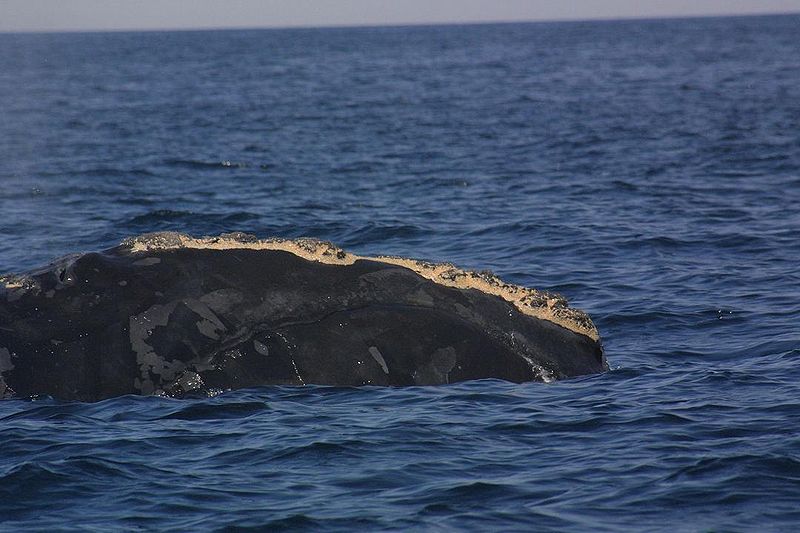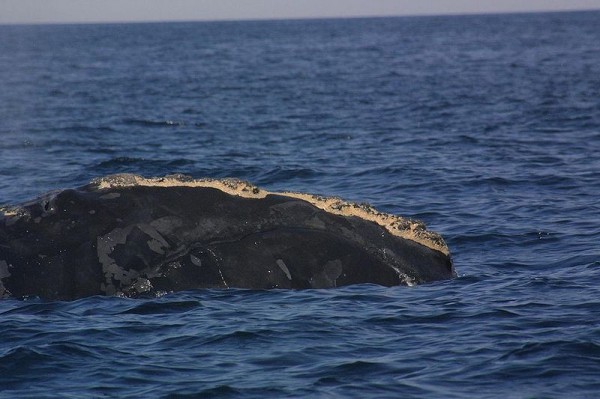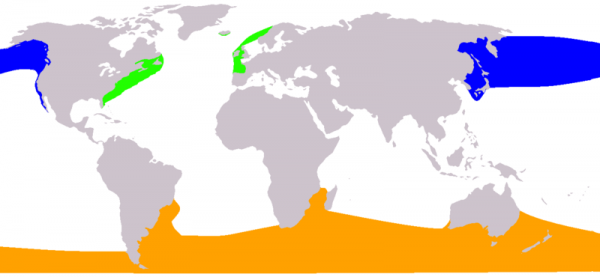Hundreds of endangered whales swarming New England coast

A record number of critically endangered right whales are crowding the chilly waters off Cape Cod, Massachusetts. Researchers counted more than 100, and possibly as many as 200, animals during aerial surveys on Tuesday, a number that could represent nearly half the entire known right whale population that remains on Earth.
Right whales, one of the rarest kinds of baleen whales, are teetering on the brink of extinction. Only about 450 to 500 North Atlantic right whales are thought to remain on the planet. The whales are as close as a few yards offshore to about a quarter-mile out. The marine crowd could remain in the area for at least another week.
The right whales are gathered for a feeding frenzy on zooplankton, tiny, rice-sized crustaceans the baleen whales strain into their massive mouths. It’s likely the record number of whales showed up this year because the waters are particularly rich with plankton this year, in much the same way that, on land, some years are better for crops than others. Despite their tiny-sized diet, right whales are enormous. The largest can reach up to 60 feet (18 meters) and the whales weigh from 132,000 to 220,500 pounds (60,000 to 100,000 kilograms). The whales have distinctive, rough, raised patches on their heads, which are often infested with whale lice, turning the large, crusty growths a whitish color.
So many whales are crowding Cape Cod that the Massachusetts Division of Marine Fisheries has issued a warning for boaters to steer clear of the animals. It’s against federal law to get within 500 yards of the enormous mammals – whales have historically been fatally injured by boats.
Those who want to see the whales can take a walk along the beach. The massive gathering is exciting, even for scientists accustomed to cetacean sightings. (OurAmayingPlanet)

Unlike other whales, right whales have distinctive callosities (roughened patches of skin) on their heads, along with a broad back without a dorsal fin, occasionally with white belly patches, and a long arching mouth that begins above the eye. The callosities appear white due to large colonies of cyamids (whale lice). They can grow up to 18 m (59 ft) long and weigh up to 100 short tons (91 t), significantly larger than humpbacks or grays, but smaller than blues.
Females reach sexual maturity at 6–12 years and breed every 3–5 years. Both reproduction and calving take place during the winter months. Calves are approximately 1 short ton (0.91 t) in weight and 4–6 m (13–20 ft) in length at birth following a gestation period of 1 year. The right whale grows rapidly in its first year, typically doubling in length. Weaning occurs after eight months to one year and the growth rate in later years is not well understood—it may be highly dependent on whether a calf stays with its mother for a second year.
Very little is known about the life span of right whales because they are so scarce scientists cannot readily study them. One of the few well-documented cases is of a female North Atlantic right whale that was photographed with a baby in 1935, then photographed again in 1959, 1980, 1985, and 1992. Consistent callosity patterns ensured that it was the same animal. She was last photographed in 1995 with a seemingly fatal head wound presumably from a ship strike. The animal died at around 70 years of age. Research on the bowhead whale suggests this lifespan is not uncommon and may even be exceeded.
Right whales swim slowly, reaching only 5 kn (9.3 km/h) at top speed, but are highly acrobatic and frequently breach (jump clear of the sea surface), tail-slap and lobtail. Like other baleen whales, the species is not gregarious and the typical group size is only two. Groups of up to twelve have been reported, but these were not close-knit and may have been transitory.
The right whales’ only predators are Orcas and humans. When danger lurks, a group of right whales may form a circle, with their tails pointing outwards. This defense is not always successful and calves are occasionally lost.
Because the oceans are so large, it is very difficult to accurately gauge whale population sizes. Approximate figures:
- 400 to 450 North Atlantic right whales (Eubalaena glacialis) live in the North Atlantic;
- 30-50 North Pacific right whales live in the eastern North Pacific (Eubalaena japonica) and perhaps 100-200 more in the Sea of Okhotsk;
- 12,000 Southern right whales (Eubalaena australis) are spread throughout the southern part of the Southern Hemisphere; and
- 9,000–10,000 bowhead whales are distributed entirely in the Arctic Ocean and sub-polar seas.
Almost all of the 400 North Atlantic right whales, live in the western North Atlantic Ocean. In spring, summer and autumn, they feed in areas off the Canadian and north-east U.S. coasts in a range stretching from New York to Nova Scotia. Particularly popular feeding areas are the Bay of Fundy and Cape Cod Bay. In winter, they head south towards Georgia and Florida to give birth.
There have been a smattering of sightings further east over the past few decades—several sightings were made close to Iceland in 2003. It is possible that these are the remains of a virtually extinct eastern Atlantic stock, but examination of old whalers’ records suggest that they are more likely to be strays.However, a few sightings are regular between Norway, Ireland, Spain, Portugal, the Canary Islands and even Italy and Sicily and at least the Norway individuals come from the Western stock.



Commenting rules and guidelines
We value the thoughts and opinions of our readers and welcome healthy discussions on our website. In order to maintain a respectful and positive community, we ask that all commenters follow these rules.